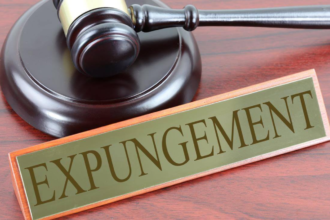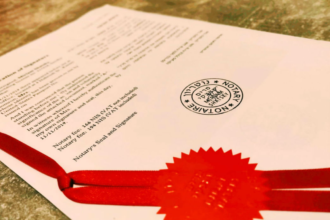As Seattle continues to promote cycling as a sustainable and efficient mode of transportation, the city is responsible for ensuring that its infrastructure is safe and well-maintained for cyclists. However, when poor infrastructure leads to bicycle accidents, it can be challenging to determine who is liable for the resulting injuries and damages.
- The City’s Responsibility for Maintaining Safe Infrastructure
- Proving Negligence in Infrastructure-Related Bicycle Accidents
- Shared Responsibility: Contractors and Construction Companies
- The Role of Design Defects in Infrastructure-Related Accidents
- Comparative Negligence: When Cyclist Actions Contribute to Accidents
- Seeking Compensation for Infrastructure-Related Bicycle Accidents
- Advocating for Improved Bicycle Infrastructure and Safety
Cyclists injured due to inadequate or dangerous infrastructure may be entitled to compensation for their losses. In these cases, it is crucial to seek the assistance of a skilled Seattle bicycle accident attorney at Fang Law Firm who can help investigate the accident, identify the responsible parties, and fight for the compensation the cyclist deserves.
The City’s Responsibility for Maintaining Safe Infrastructure
The City of Seattle has to maintain its roads, sidewalks, and bicycle infrastructure in a reasonably safe condition for all users, including cyclists. This responsibility involves regularly inspecting, repairing, and updating infrastructure to ensure it meets safety standards and accommodates the needs of cyclists.
When the city fails to fulfill this duty and a cyclist is injured as a result, the city may be held liable for the accident. Examples of poor infrastructure that can lead to bicycle accidents include potholes, uneven pavement, inadequate bike lanes, and faulty traffic signals. If the city knew or should have known about these hazards but failed to address them on time, they may be responsible for the resulting accidents and injuries.
Proving Negligence in Infrastructure-Related Bicycle Accidents
When dealing with bicycle accidents caused by inadequate infrastructure, proving negligence is crucial for holding the responsible party accountable. Here is a simplified breakdown of the steps involved in establishing negligence in such cases:
- Duty of Care: Demonstrate that the entity responsible for maintaining the infrastructure had a duty to ensure it was safe for use.
- Breach of Duty: Show that this duty was not met, constituting a breach.
- Cause of Injury: Link the breach directly to the cyclist’s injuries, proving that the negligence was the direct cause.
- Evidence Gathering: Collect evidence from the accident scene, including photographs and witness statements.
- Expert Consultation: Engage experts to provide opinions that support the case.
- Legal Assistance: Work with an attorney experienced in bicycle accident cases to effectively present the collected evidence.
- Damage Documentation: Establish the extent of the cyclist’s damages through medical and repair bills and other relevant documentation.
Shared Responsibility: Contractors and Construction Companies
In some cases, the responsibility for maintaining safe infrastructure may be shared between the city and private contractors or construction companies. When road work, construction projects, or utility repairs are underway, these entities have a duty to ensure that proper safety measures are in place to protect cyclists and other road users.
If a contractor or construction company fails to provide adequate warning signs, barriers, or temporary bike lanes, and a cyclist is injured as a result, they may be held liable for the accident. An attorney well-versed in bicycle accident cases can help determine if multiple parties share responsibility for the accident and pursue compensation from all liable entities.
The Role of Design Defects in Infrastructure-Related Accidents
In addition to poor maintenance and construction, design defects in bicycle infrastructure can also contribute to accidents. When bike lanes, intersections, or other elements of the infrastructure are designed in a way that creates unnecessary hazards or confusion for cyclists, the city or the design firm responsible may be held accountable.
Examples of design defects include bike lanes that abruptly end without proper signage, intersections with inadequate visibility, or poorly placed obstacles that force cyclists into traffic. If a cyclist is injured due to a design defect, an attorney specializing in bicycle accident cases can help investigate the case and determine if the city or design firm should be held liable for the resulting damages.
Comparative Negligence: When Cyclist Actions Contribute to Accidents
While poor infrastructure is often a significant factor in bicycle accidents, it is important to note that cyclists also have a responsibility to ride safely and follow traffic laws. In some cases, a cyclist’s actions may contribute to an accident, even if poor infrastructure plays a role.
Washington state follows the rule of comparative negligence, which means that if a cyclist is found to be partially at fault for an accident, their compensation may be reduced by the percentage of their fault. For example, if a cyclist is determined to be 20% at fault for an accident, they may still recover 80% of their damages from the responsible party. An attorney with expertise in bicycle accident cases can help assess the cyclist’s role in the accident and work to minimize any potential impact on their compensation.
Seeking Compensation for Infrastructure-Related Bicycle Accidents
Cyclists who have been injured in accidents caused by poor infrastructure may be entitled to compensation for their medical expenses, lost wages, pain and suffering, and other related damages. However, pursuing a claim against the city or other responsible parties can be a complex and challenging process.
Government entities, such as the City of Seattle, have specific procedures and deadlines for filing claims, and they may have certain protections under the law that can make it more difficult to pursue compensation. An attorney with a deep understanding of bicycle accident cases can help navigate these complexities, ensure that all necessary steps are taken, and fight for the full compensation the cyclist deserves.
Advocating for Improved Bicycle Infrastructure and Safety
In addition to seeking compensation for individual accident victims, it is crucial to advocate for improved bicycle infrastructure and safety measures in Seattle. By holding the city and other responsible parties accountable for accidents caused by poor infrastructure, cyclists and their attorneys can push for necessary changes and improvements.
This may involve working with local advocacy groups, attending city council meetings, and raising awareness about the importance of safe and well-maintained bicycle infrastructure. By taking a proactive approach and demanding better conditions for cyclists, we can help prevent future accidents and create a more bike-friendly environment in Seattle.













